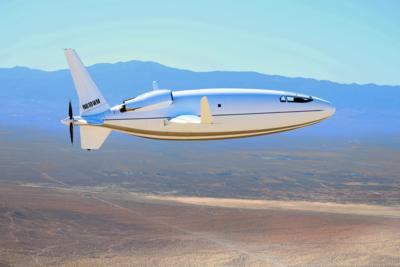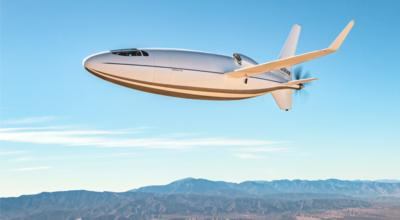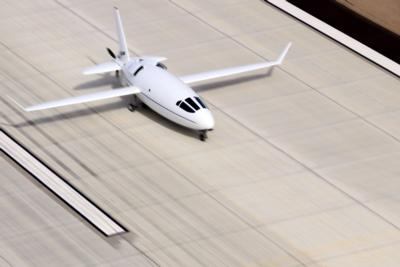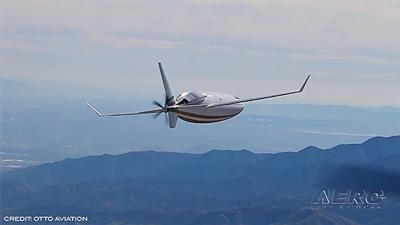Thu, Nov 18, 2021
Lithe V12-Powered Private Jet Competitor Done with Phase 1 Testing
Otto Aviation has completed testing of its Celera 500L Aircraft, marking 51hours of flight time across 55 successful flights. The aircraft's final phase 1 test flight was flown entirely on sustainable aviation fuel, furthering the brand's goal of sustainable but commercially viable business aircraft.

The Celera is designed to merge "the convenience of private air transportation but at a significantly lower cost and a dramatically reduced carbon footprint," according to Otto's website. Citing expected fuel economy of 18-25 miles per gallon against a private jet's equivalent 3 mpg, and hourly operating cost under $330 an hour, Otto sees their plane as the future of green intercontinental private travel. With a 4,500 nm range, seating for 6, first-class cabin accommodations, and a max cruise over 460 mph at 50,000 feet, the Celera is shaping up to be a powerful contender if it can meet its targets.
Phase 1 testing sought to compare the prototype against industry standards and refine the design of the Celera with real-world data. Throughout a few test flights, the team visualized the laminar flow state with a precision infrared camera mounted on a chase aircraft, quantifying extensive laminar flow capability over all external surfaces. Wing and fuselage surfaces were gauged for robustness and gathered additional data for use in strengthening the upcoming production vehicle.

Working with Cal Poly's Boundary Layer Data System, Otto was able to go further than regular friction analysis, quantifying the exact friction state of the aircraft to customize a series of tailored boundary layer rakes and find the cumulative effect of laminar friction in flight. The optimizations are important to reach their milestones, reaching similar performance figures to light jets using a liquid cooled, V12 with 550 horsepower. The Celera boasts drag about 41% of similar sized, conventional aircraft, and a 22:1 glide ratio.
Otto's timeline plans to offer a B Round of funding, while they begin FAA certification and find a home base. As development continues and orders are accepted, a C Round is expected to run from 2023 to 2025, when they will build a manufacturing facility and complete initial commercial deliveries.



More News
Pilot Also Reported That Due To A Fuel Leak, The Auxiliary Fuel Tanks Were Not Used On June 4, 2025, at 13:41 eastern daylight time, a Piper PA-23, N2109P, was substantially damage>[...]
From 2023 (YouTube Edition): Reflections on War’s Collective Lessons and Cyclical Nature The exigencies of war ought be colorblind. Inane social-constructs the likes of racis>[...]
Pilot Reported That He Was Unfamiliar With The Single Seat Amateur-Built Airplane And His Intent Was To Perform High-Speed Taxi Testing Analysis: The pilot reported that he was unf>[...]
From 2023 (YouTube Edition): First Kits to Ship October 2023 Having formerly resurrected the storied shape of the Ryan ST—in effigy, anyway—Montrose, Colorado-based Tim>[...]
Performance-Based Navigation (PBN) [ICAO] Area navigation based on performance requirements for aircraft operating along an ATS route, on an instrument approach procedure or in a d>[...]
 NTSB Prelim: Piper PA-23
NTSB Prelim: Piper PA-23 Classic Aero-TV: One Mans Vietnam
Classic Aero-TV: One Mans Vietnam NTSB Final Report: Capella Aircraft Corp FW1C50
NTSB Final Report: Capella Aircraft Corp FW1C50 Classic Aero-TV: Timber Tiger Touts Curtiss Jenny Replicas
Classic Aero-TV: Timber Tiger Touts Curtiss Jenny Replicas ANN's Daily Aero-Term (07.04.25): Performance-Based Navigation (PBN) [ICAO]
ANN's Daily Aero-Term (07.04.25): Performance-Based Navigation (PBN) [ICAO]






